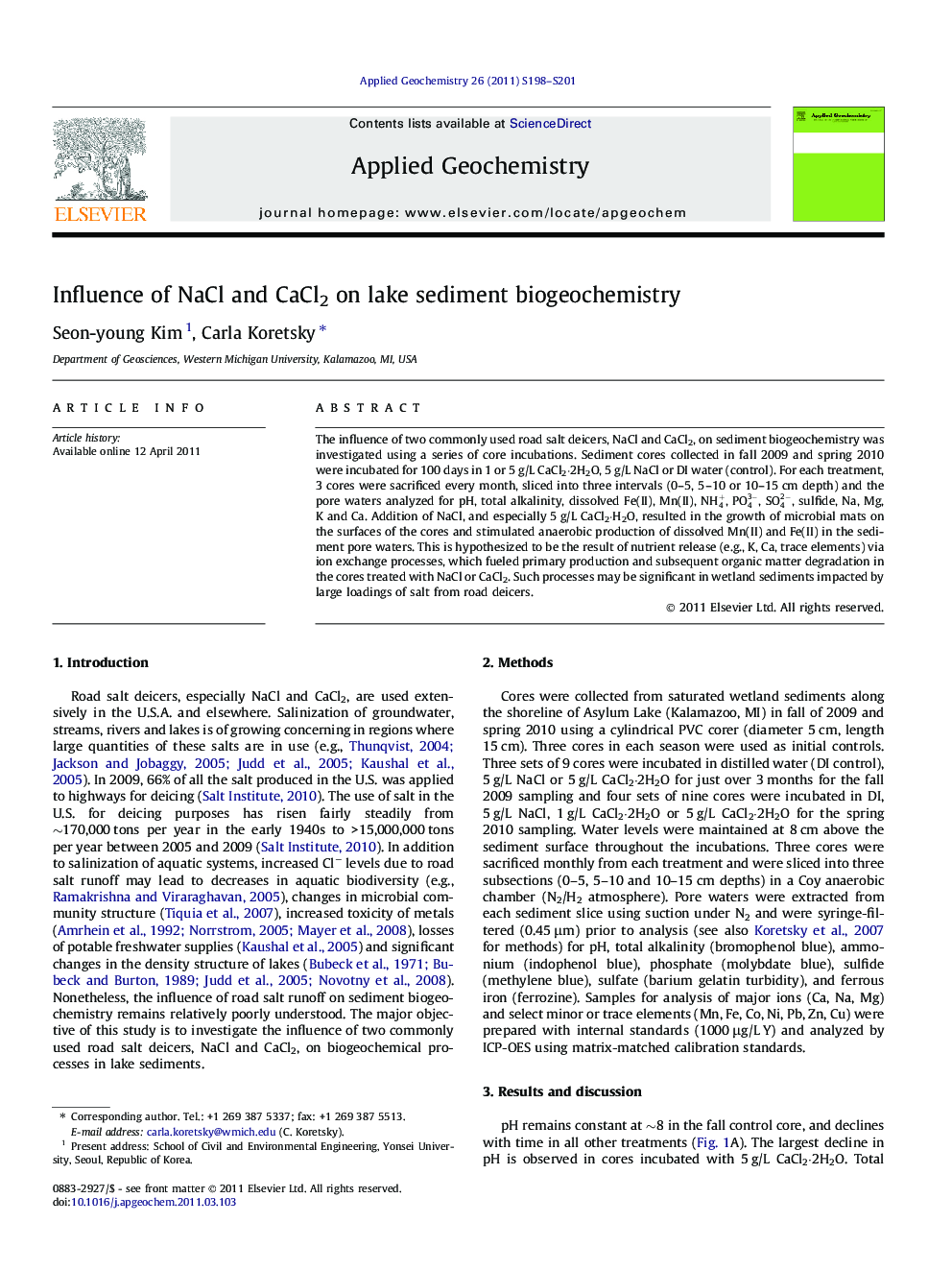| کد مقاله | کد نشریه | سال انتشار | مقاله انگلیسی | نسخه تمام متن |
|---|---|---|---|---|
| 4436499 | 1310683 | 2011 | 4 صفحه PDF | دانلود رایگان |

The influence of two commonly used road salt deicers, NaCl and CaCl2, on sediment biogeochemistry was investigated using a series of core incubations. Sediment cores collected in fall 2009 and spring 2010 were incubated for 100 days in 1 or 5 g/L CaCl2·2H2O, 5 g/L NaCl or DI water (control). For each treatment, 3 cores were sacrificed every month, sliced into three intervals (0–5, 5–10 or 10–15 cm depth) and the pore waters analyzed for pH, total alkalinity, dissolved Fe(II), Mn(II), NH4+, PO43-, SO42-, sulfide, Na, Mg, K and Ca. Addition of NaCl, and especially 5 g/L CaCl2·H2O, resulted in the growth of microbial mats on the surfaces of the cores and stimulated anaerobic production of dissolved Mn(II) and Fe(II) in the sediment pore waters. This is hypothesized to be the result of nutrient release (e.g., K, Ca, trace elements) via ion exchange processes, which fueled primary production and subsequent organic matter degradation in the cores treated with NaCl or CaCl2. Such processes may be significant in wetland sediments impacted by large loadings of salt from road deicers.
► We assess the effect of NaCl and CaCl2 addition on lake sediment geochemistry.
► Addition of NaCl or CaCl2 stimulates ion exchange.
► Addition of NaCl, and especially CaCl2, stimulates anaerobic respiration of Fe and Mn.
Journal: Applied Geochemistry - Volume 26, Supplement, June 2011, Pages S198–S201